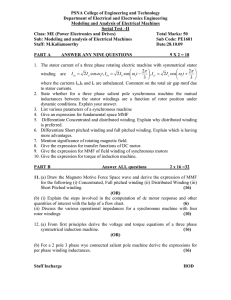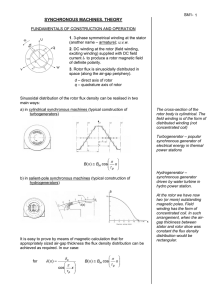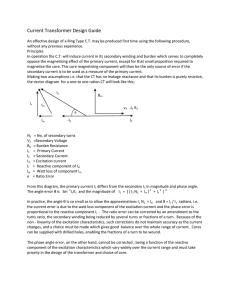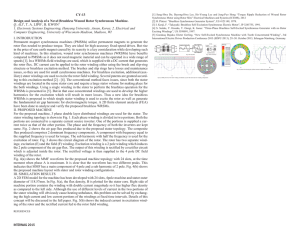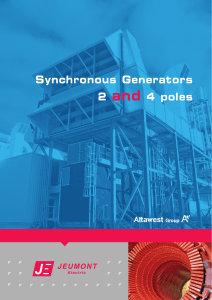高 等 電 機 機 械 報 告 作業討論 第四章 指導教授
advertisement
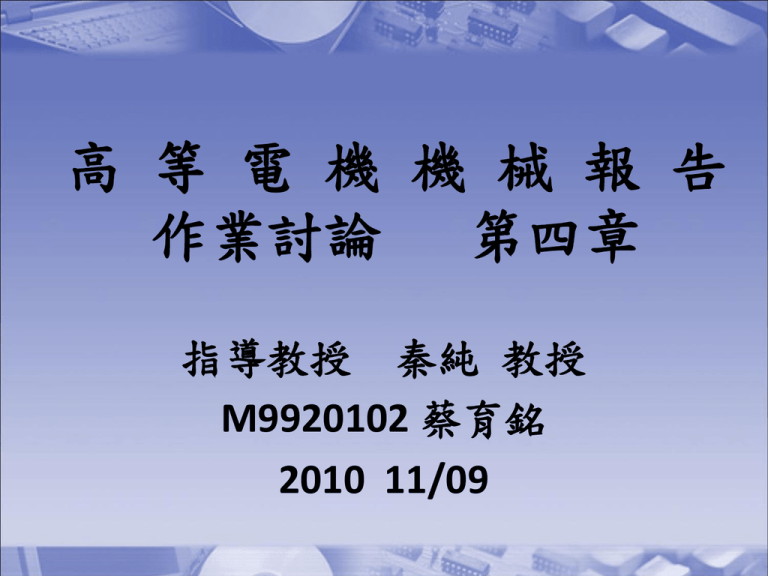
高 等 電 機 機 械 報 告 作業討論 第四章 指導教授 秦純 教授 M9920102 蔡育銘 2010 11/09 4.12 The three-phase synchronous machine of Problem 4.9 is to be moved to an application which requires that its operating frequency be reduced from 60 to 50Hz. This application requires that , for the operating condition considered in Problem 4.8, the Vrms generated voltage equal 13.0 kV line-to-line. As a result, the machine armature must be rewound with a different number of turns. Assuming a winding factor of Kw=0.928, calculate the required number of series turns per phase. Solution 4.12 4.18 A two-pole, 60 Hz, three-phase, laboratory-size synchronous generator has a rotor radius of 5.71 cm, a rotor length of 18.0 cm, and an air-gap length of 0.25 mm. The rotor filed winding consists of 264 turns with a winding factor of kr = 0.95. The Y-connected armature winding consists of the 45 turns per phase with a winding actor kw = 0.93. a. Calculate the flux per pole and peak fundamental air-gap flux density which will result in an open-circuit, 60-Hz armature voltage of 120 V rms / phase (line-to-neutral). b. Calculate the dc field current required to achieve the operating condition of part (a). c. Calculate the peak values of the field-winding to armaturephase winding mutual inductance. Solution 4.18 4.20 A four-pole, 60Hz synchronous generators has a rotor length of 5.2 m, diameter of 1.24 m, and airgap length of 5.9 cm. The rotor winding consists of a series connection of 63 turns per pole with a winding factor of Kr = 0.91. The peak values of the fundamental air-gap flux density is limited to 1.1 T and the rotor winding current to 2700 A. Calculate the maximum torque (N.m) and power output (MW) which can be supply by this machine. Solution 4.20 Thank you Very much!!

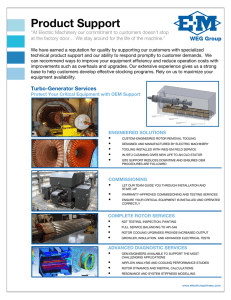
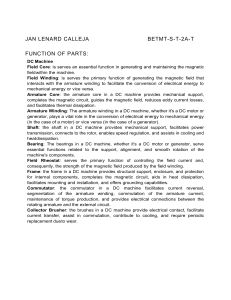

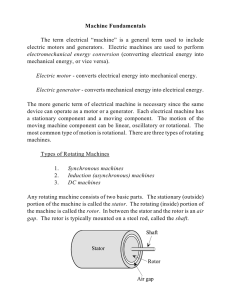
![FORM NO. 157 [See rule 331] COMPANIES ACT. 1956 Members](http://s3.studylib.net/store/data/008659599_1-2c9a22f370f2c285423bce1fc3cf3305-300x300.png)

